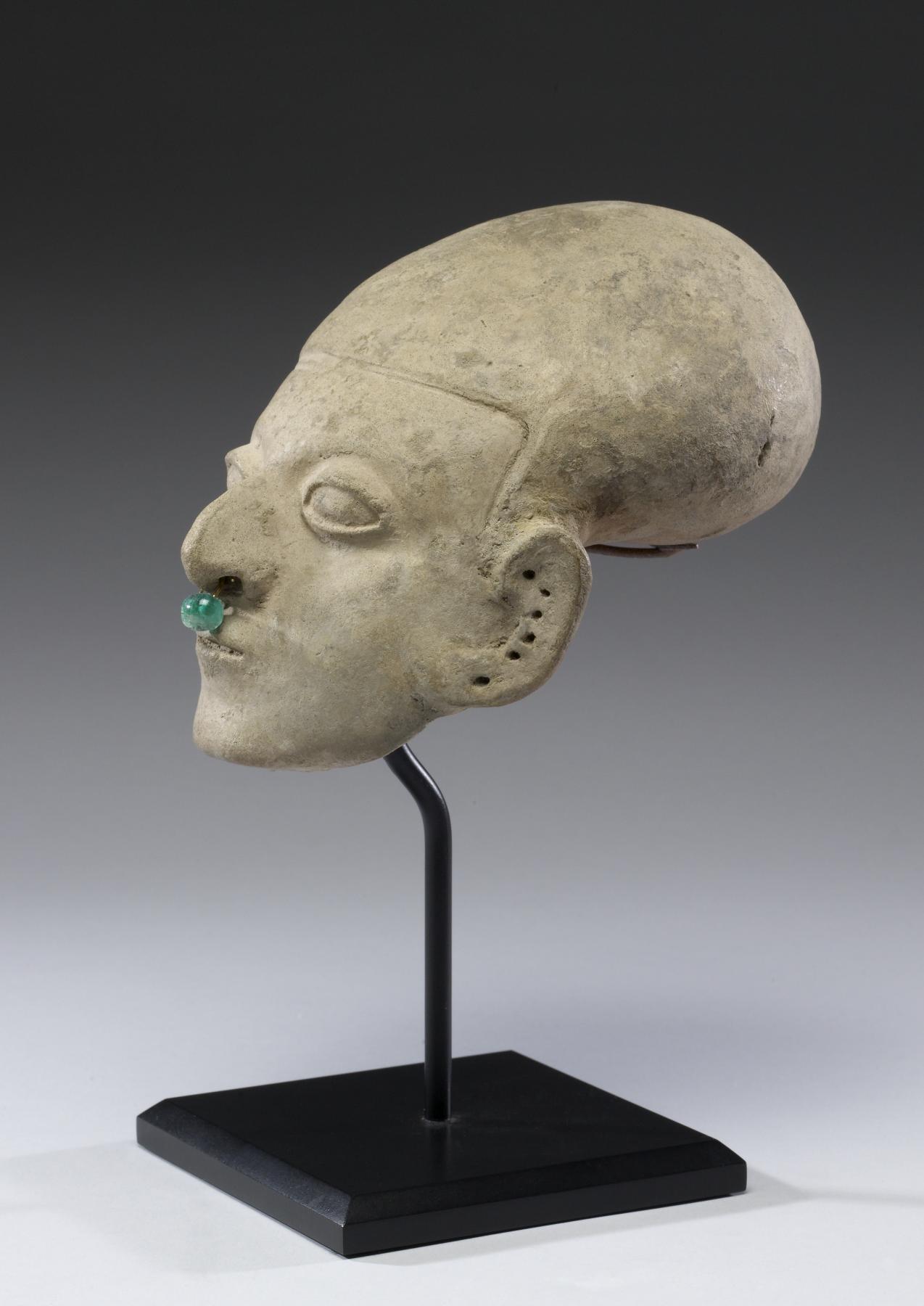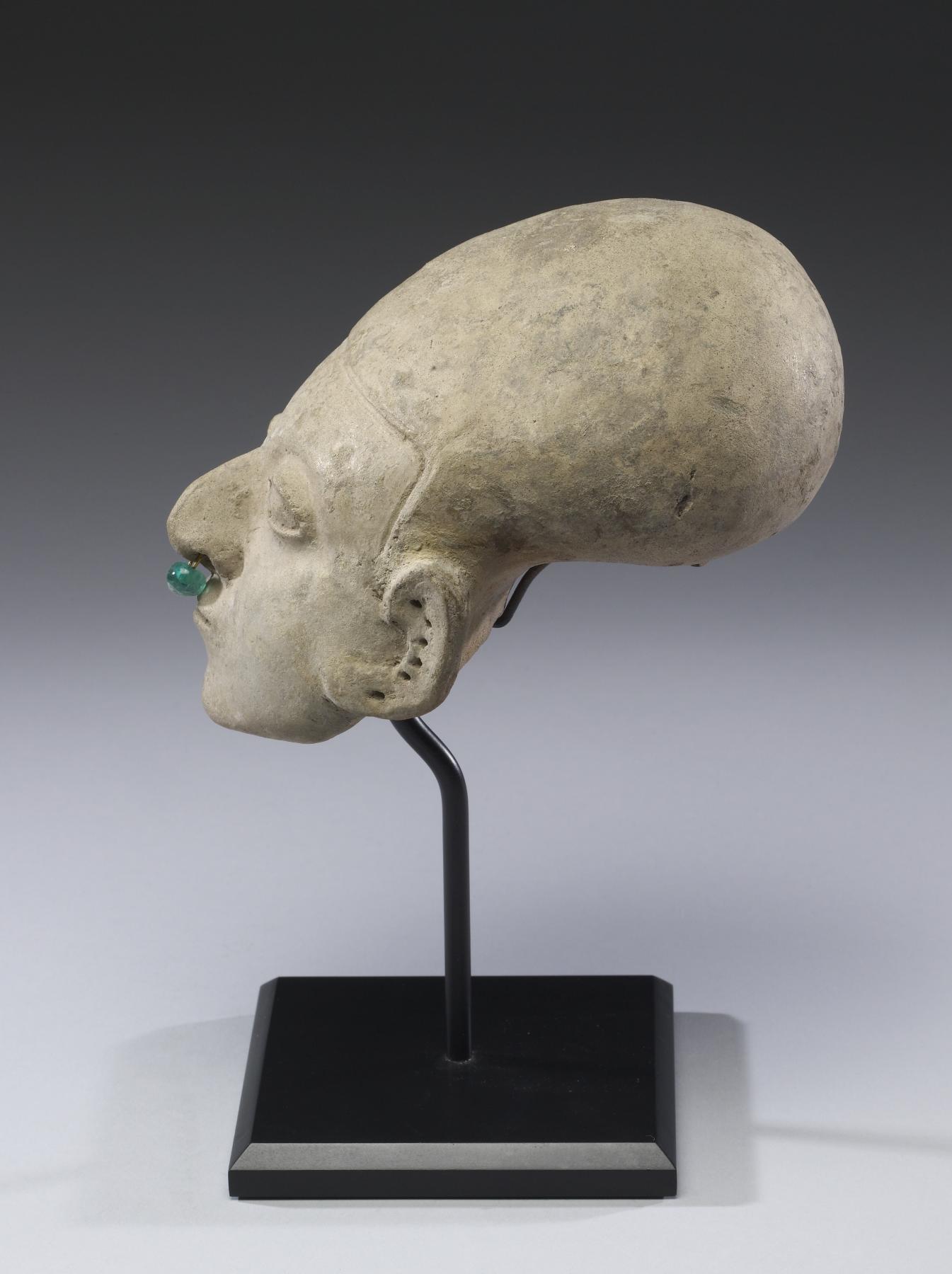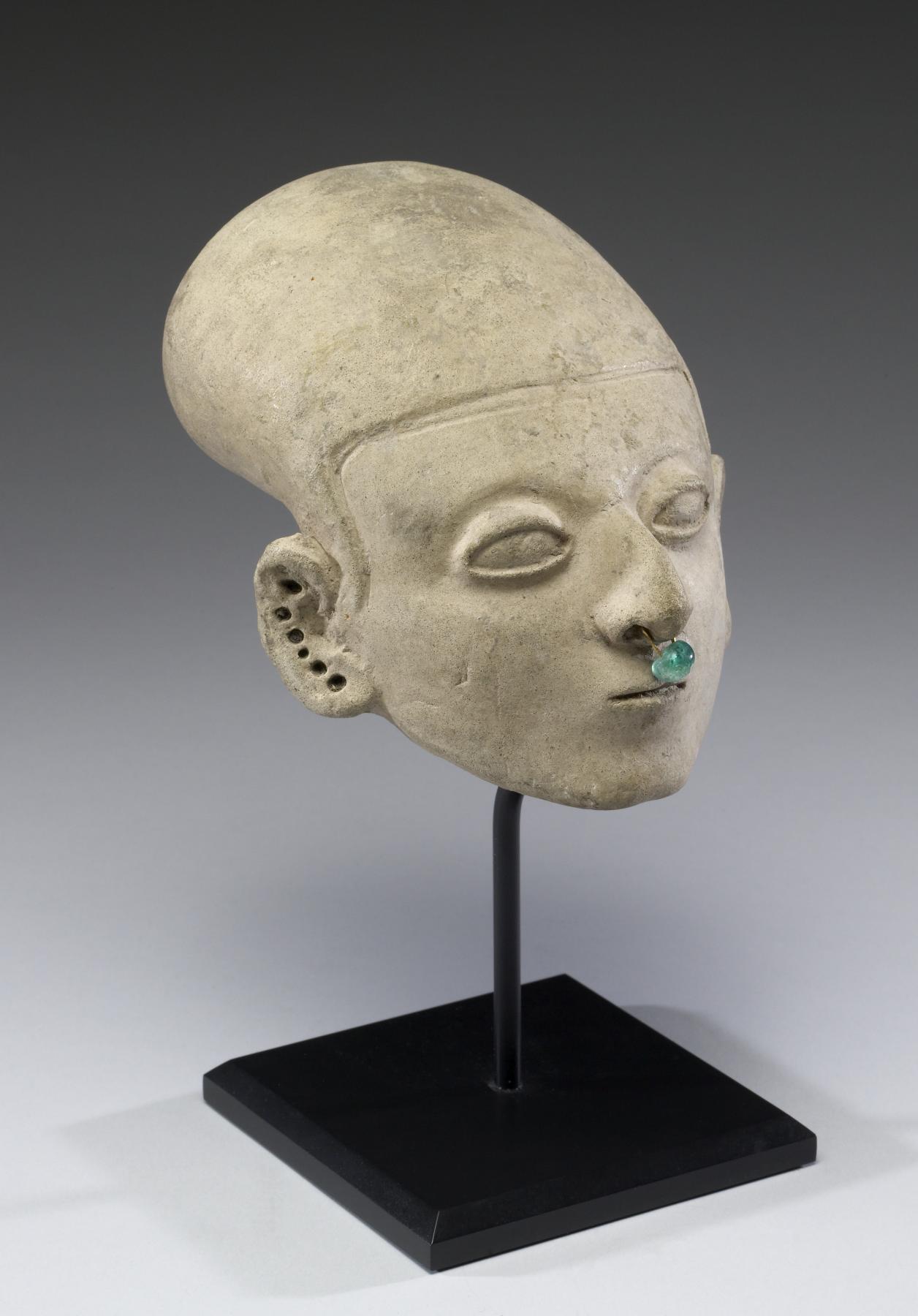Head
(Ancient Americas )
The Chorrera art style developed from the Valdivia tradition and spread throughout the southern coastal and adjacent inland regions. This was a time of social, political, economic, and artistic innovations prompted by agricultural improvements and a growing population. New settlements and towns, with ever-larger numbers of inhabitants, triggered the need for methods to manage village life and ensure the well-being of the community, which, in turn, led to greater social hierarchy. Hand-in-hand with the growing social complexity was the appearance of more complex religious practices. Both developments encouraged the desire for novel artworks to express the new sociopolitical and spiritual ideologies that characterize this dynamic time throughout ancient Ecuador. At this time, the earlier Valdivia figurine tradition developed into an elaborate figural art form with such novel artistic expressions as the elegant, mold-made sculptures of the Jama Coaque and La Tolita styles of Ecuador's northwestern coastal region. This example likely pertains to the La Tolita style, which is differentiated by its heightened naturalism.
Provenance
Provenance (from the French provenir, 'to come from/forth') is the chronology of the ownership, custody, or location of a historical object. Learn more about provenance at the Walters.
Ron Messick Fine Arts, Santa Fe, New Mexico; purchased by John G. Bourne, Santa Fe, New Mexico, 2000; given to Walters Art Museum, 2013.
Exhibitions
| 2018-2019 | Transformation: Art of the Ancient Americas. The Walters Art Museum, Baltimore. |
Geographies
Ecuador (Place of Origin)
Measurements
H: 7 x W: 5 x D: 3 11/16 in. (17.78 x 12.7 x 9.4 cm)
Credit Line
Gift of John G. Bourne, 2013
Location in Museum
Not on view
Accession Number
In libraries, galleries, museums, and archives, an accession number is a unique identifier assigned to each object in the collection.
In libraries, galleries, museums, and archives, an accession number is a unique identifier assigned to each object in the collection.
2009.20.182










